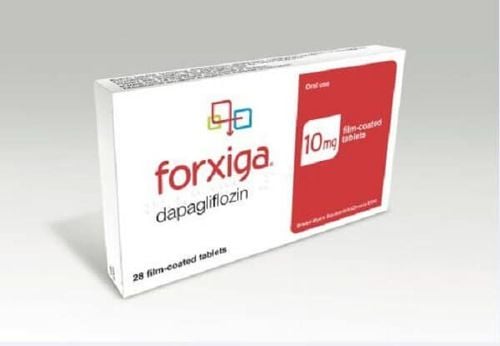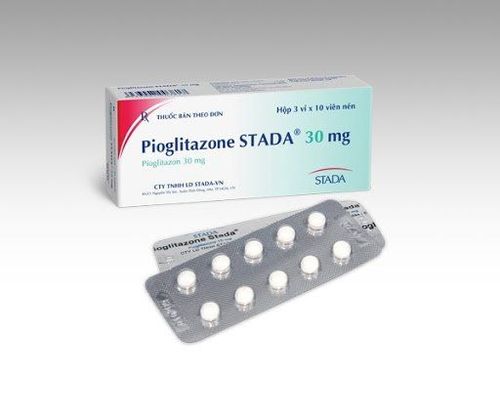This is an automatically translated article.
Metovance medicine contains the main ingredients Metformin HCl and Glibenclamide. The drug is effective in the treatment of type 2 diabetes with the aim of controlling blood sugar.
1. What is Metovance?
Metovance is used in the treatment of type 2 diabetes to control blood sugar. The use of Metovance drug needs to be combined with a suitable diet and lifestyle.
Ingredients in Metovance:
The main active ingredient Metformin is in the form of Metformin hydrochloride salt with a content of 500mg; Glibenclamide 5mg; Some other excipients with sufficient content of Metovance 500/5 tablets.
2. Effects of the drug Metovance
Effects of ingredients in Metovance:
Metformin belongs to the Biguanid group of diabetes drugs. Metformin's use is to lower blood sugar but not hypoglycemia. Glibenclamide has the ability to lower blood glucose levels. However, the effectiveness of the drug will depend on the secretory function of beta cells. With the above effects, Metovance is indicated in the following cases:
Treatment of non-insulin dependent diabetes mellitus (type 2 diabetes mellitus) with the aim of controlling blood sugar. Combine medication with diet and exercise.
3. How to take Metovance
The drug Metovance is taken orally. The time to use Metovance is right before eating. With a dose of 1 tablet / day: Take in the morning. With a dose of 2 or 4 tablets/day: Divide and 2 times, drink at breakfast and dinner. With a dose of 3 tablets/day: Divide into 3 doses, drink at breakfast, lunch and dinner. Metovance Reference Dose:
Metovance is usually started with an equivalent dose of Metformin and Glibenclamide, then gradually increased based on blood glucose test results. Maximum dose of Metovance 3 tablets / day. Exceptions can be taken 4 Metovance tablets / day. In case you forget a dose of Metovance, take it as soon as you remember. However, you need to skip the missed dose if it is almost time for your next dose. Do not take double the prescribed dose because it may cause an overdose
Metovance overdose will cause symptoms such as acute hypoglycemia, lactic acidosis. Therefore, if you overdose and have serious side effects, you / your loved ones should immediately go to the medical center for timely treatment.
4. Contraindications to the use of Metovance
Metovance is not indicated for the following cases:
Hypersensitivity to Sulphonamide or any ingredient in Metovance. People with insulin-dependent diabetes (type 1), severe loss of control with diabetic ketoacidosis, or diabetic pre-coma. People with liver and kidney failure or impaired kidney function should not use Metovance. Have a serious infection. Loss of water. Do not use in people who have just had an X-ray test using iodinated contrast material given intravenously. Recent heart attack or heart failure, respiratory failure. Excessive use of alcoholic beverages such as beer, wine.... Disturbances of porphyrin metabolism; Are using the antifungal medicine Miconazole. Pregnant or nursing women should not use Metovance.
5. Undesirable effects when using the drug Metovance
Some possible side effects when taking Metovance are as follows:
Digestive system: Anorexia, nausea, vomiting, constipation or diarrhea, epigastric pain. Skin: Rash, urticaria, itching. Lower blood glucose. Leukopenia and thrombocytopenia, marrow aplasia, hemolytic anemia, agranulocytosis (rare). Lactic acidosis. If any side effects appear while using Metovance, notify your doctor or pharmacist immediately for timely treatment.
6. Drug interactions
Drug interactions that need attention when combining with Metovance:
Diuretics, oral contraceptives, corticosteroids. Phenothiazines, thyroid preparations. Phenytoin, Isoniazid, nicotinic acid, calcium channel blockers. Catonic. Cimetidine increases the fixed plasma and blood concentrations of metformin. Sulfonamides, Ciprofloxacin, Enoxacin, Fluconazole, Miconazole, Salicylates, Phenylbutazone, non-steroidal anti-inflammatory drugs. Fluoroquinolones, Coumarin derivatives, beta-blockers, Tetracyclines. Angiotensin-converting enzyme inhibitors, monoamine oxidase inhibitors, cyclophosphamide and alcohol. Azapropazone, Chloramphenicol, Perhexiline. Clofibrat and Fenofibrate, Sulfinpyrazone, Probenecid, Pentoxifylin. Thiazide diuretics, furosemide, nicotinic acid (in high doses), sympathomimetic drugs. Thyroid hormones, Ethacrylic acid and Phenothiazine derivatives. Oral contraceptives containing Estrogen/Gestagen and Corticosteroids. Changes in the hypoglycaemic effect when Metovance is used in combination with anti-tuberculosis drugs. Salbutamol, Terbutalin (intravenously) increase blood glucose. To ensure the safety and effectiveness of your treatment, tell your doctor about all medications, supplements, and vitamins you are taking.
7. Notes when using and how to store Metovance
Do not use Metovance for pregnant or lactating women. Because the drug has a hypoglycemic effect, it will affect the ability to drive and use machines. Therefore, Metovance should be used with caution in these subjects. Regular monitoring of laboratory tests to determine the exact minimum effective dose of Metovance. For people with cerebral arteriosclerosis, the elderly need to be cautious. Discontinue Metovance during surgical procedures. Store Metovance at a temperature below 30 degrees Celsius, out of the reach of children. Do not use Metovance when it has expired or shows signs of deterioration. Above is information about the drug Metovance, patients need to carefully read the instructions for storing the drug on the package and the instruction sheet. Check the expiration date before taking the medicine. When the medicine is no longer in use, you need to collect and dispose of it according to the manufacturer's instructions.
Please dial HOTLINE for more information or register for an appointment HERE. Download MyVinmec app to make appointments faster and to manage your bookings easily.













